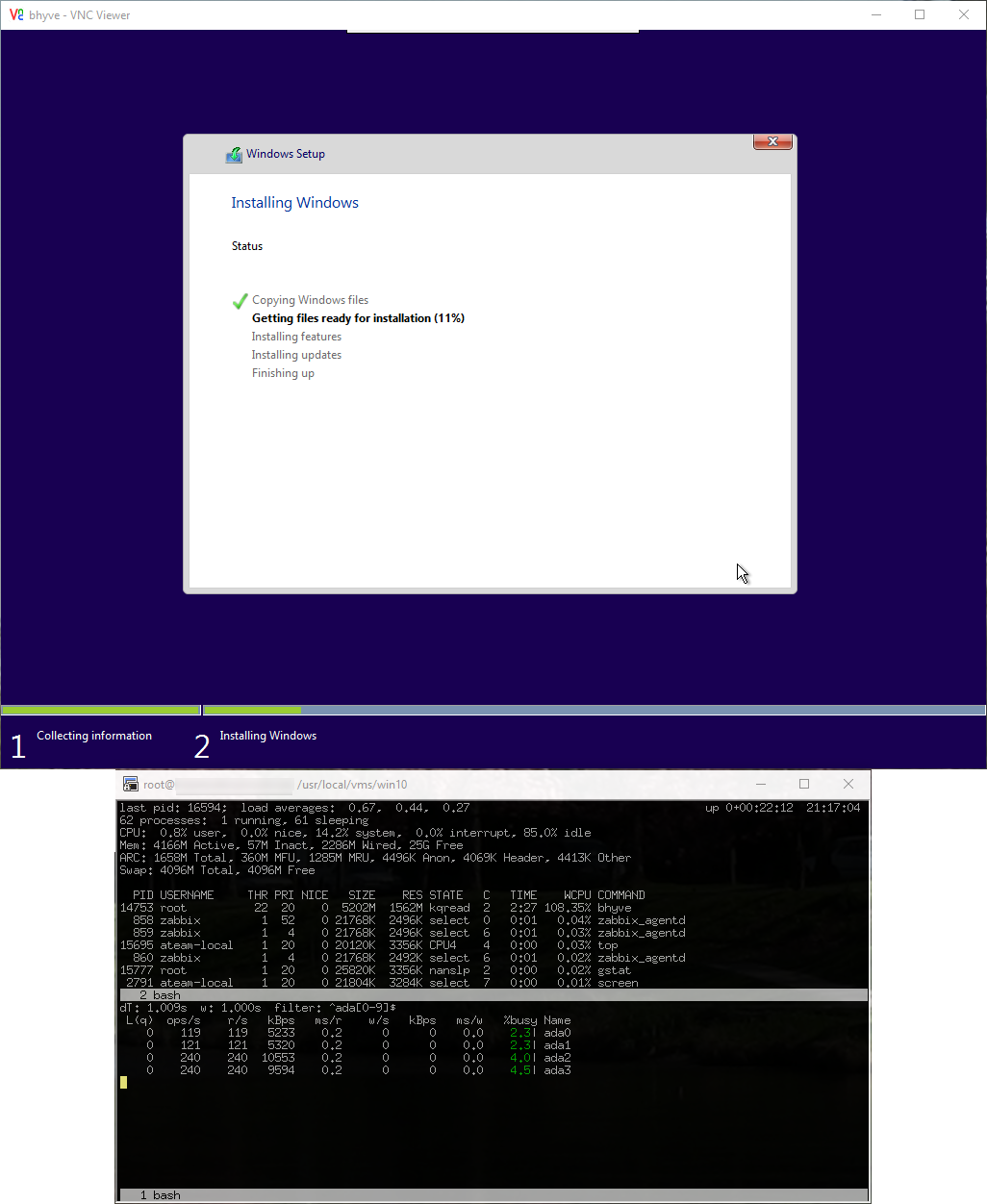Freenas Virtio Drivers
Apr 12, 2017 - Step 1) Create a Pool dataset, where you will copy the Windows.iso file and the VIRTIO Drivers. You can download the Windows Disk Image. Sep 15, 2012 - Probably you want SATA or SCSI as the type - I don't *think* FreeNAS is going to have built-in VirtIO drivers. (If it did, then you'd want VirtIO.
Built in 2018, I reused the name, but this is the 8th FreeNAS unit I have built for home. However, I just do not have time right now to waste with this and as far as I know there is something like this in the bug list which was meant to be fixed in 11.1, but was pushed back and back. Since the base code of bHyve is created by someone else, they depend on that code and I doubt that the creators have the will or incentive to develop for and fix issues that affect Windows on bHyve until it reaches proper stability to be used more than a novelty or hobby. I`m just disappointed that a perfectly working solution (that really added to FreeNAS` value and use cases) was cut out and replaced with a half-baked one that cannot even run some Linux distributions stably (as I understand from many other posts), let alone Windows. If and when I will have the time, I will use it to try and install PHP Virtual Box in a jail manually and see if that works the way it used to and if it does, stick to it for the foreseeable future. In case anyone is curious: I managed to finally get a Windows 10 VM running if I installed it with just 1 CPU and no devices, except VNC, HDD (AHCI) and CD (so no NIC!).

After it got installed, I installed all of the VirtIO drivers I could install + I added the following System Tunables in the FreeNAS GUI: (Type: Loader) hw.vmm.topology.cores_per_package: 4 (Type: Loader) hw.vmm.topology.threads_per_core: 2 After this, I allocated 6 CPUs and it works OK. I could also allocate 2 NICs (VirtIO) without issues. It now has Blue Iris running happily for almost a month, constantly recording without any stability problems - YAY. Built in 2018, I reused the name, but this is the 8th FreeNAS unit I have built for home. OK, so to start from the beginning, I tried setting up a BHYVE Windows VM (tried 7, 8 and 10) starting with FreeNAS 11.0 U4. In that version, I was able to get Windows 8 and 10 installed, but would crash as soon as I started any application that required any kind of 3D acceleration.
Write something about yourself. No need to be fancy, just an overview. No Archives Categories. Prodazhu istoriia sanniveila advanced,:))), Telefonnyi spravochnik goroda temirtau key, >:-OOO, Skachat. Telefonnij spravochnik goroda temirtau. /Volzhskii/moskovskii-telefonnyi-spravochnik-2013.html 2013-02-21T21:02:30+00:00. /telefonnaya-baza-goroda-harkova.html 2013-02-22T09:18:36+00:00. /spravochnik-telefonov-v-gorode-temirtau.html 2013-03-09T06:01:28+00:00.
Even if I left Windows idling at the desktop, eventually it would just crash. I did try to install all of the VirtIO drivers, but it would still crash no matter what. Then I tried in FreeNAS 11.1-U1 and Windows 7/8/10 would just freeze during the installation at various percentages or steps. I stopped trying and said I would wait for FreeNAS 11.1-U2, but that was late to be released so with ~2 days before FreeNAS 11.1-U2 came out i decided to try again on FreeNAS 11.1-U1 as I was desperate - and it worked.
After FreeNAS 11.1-U2 was released I tried again with the exact same steps and it worked without issues again. So the steps that worked for me were: • The following System Tunables have to be added in the FreeNAS GUI and FreeNAS restarted.
Code: (Type: Loader) hw.vmm.topology.cores_per_package: 4 (Type: Loader) hw.vmm.topology.threads_per_core: 2 • Using the old GUI, I set up a VM (VM type: 'Virtual machine') • At Virtual CPUs, I used just 1 vCPU • Memory: 4096 • Boot Method: UEFI • Autostart: not during the testing phase, but Yes for the final VM that now has been running for over 3 weeks • Went to the devices tab and removed the NIC. All I used with the VM at first were a VNC device with 1920x1080 resolution, an AHCI disc and 2 CDROMs: one pointing to the Windows 10 Pro x64 ISO installer (created with Windows Media Creation Tool) and another one pointing to the virtio-win-0.1.141 ISO. • Powered on the VM - it would not boot directly, so I exited from the UEFI shell and manually selected the proper disc image in the VM`s UEFI/BIOS interface. Followed the normal steps to install Windows (as you can imagine, it will take quite some time with just 1 vCPU).